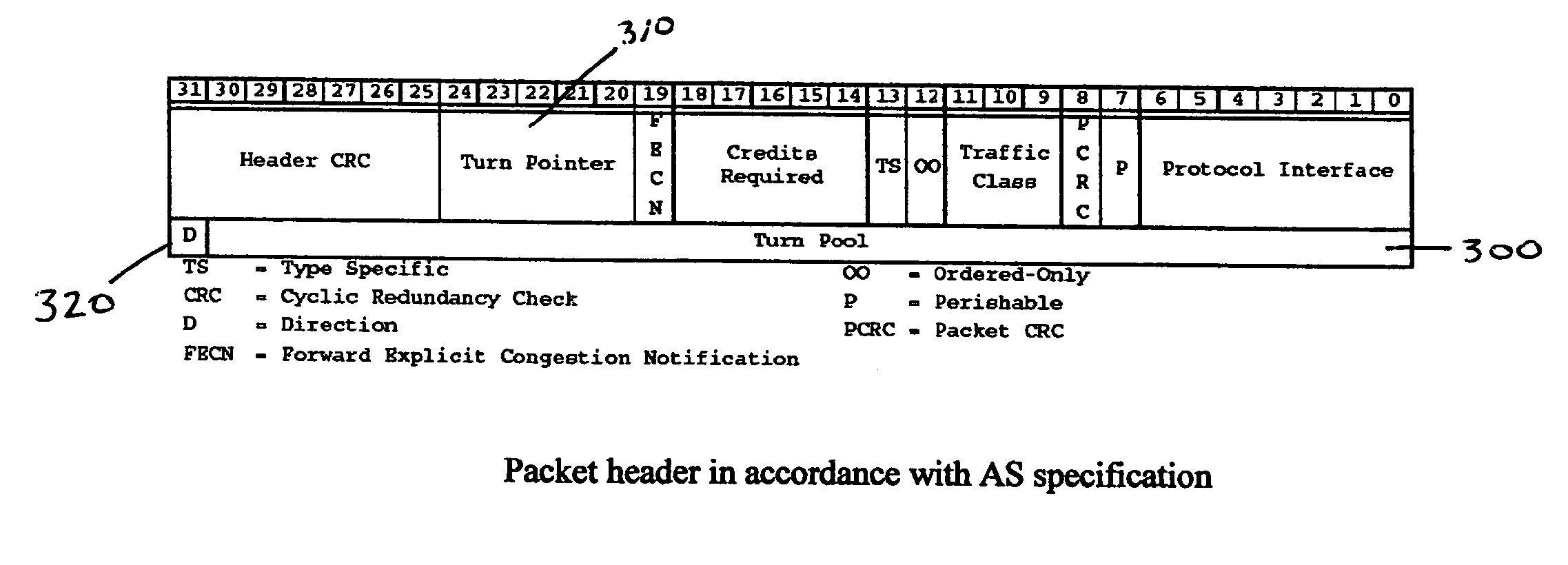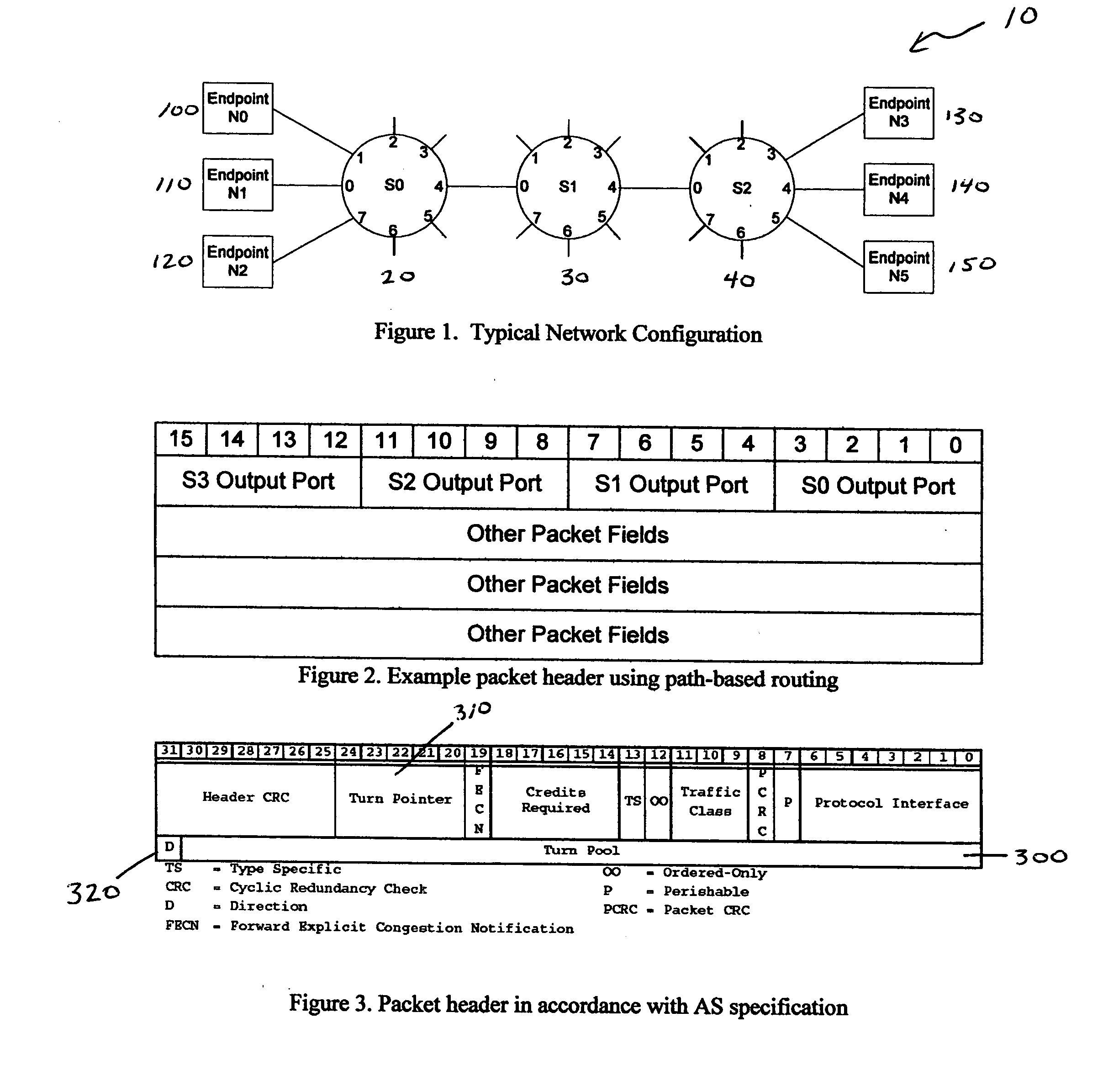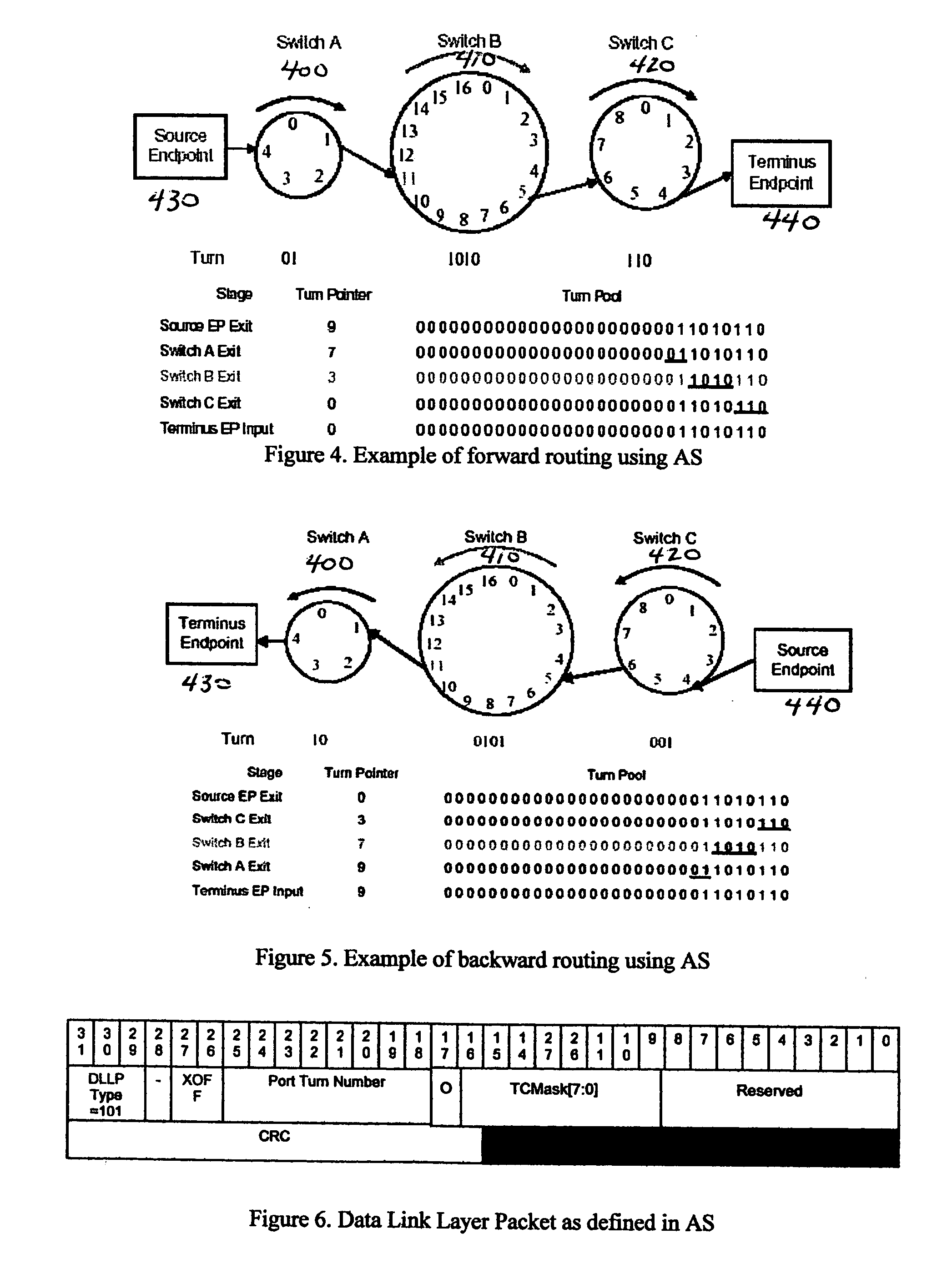System and method to identify and communicate congested flows in a network fabric
- Summary
- Abstract
- Description
- Claims
- Application Information
AI Technical Summary
Benefits of technology
Problems solved by technology
Method used
Image
Examples
Embodiment Construction
[0018] Within computer networks, systems, also known as fabrics, are designed that allow multiple nodes, or endpoints to communicate with one another. FIG. 1 illustrates a configuration used in the creation of such a fabric. Fabric 10 is comprised of a number of devices, or nodes, that are interconnected to one another. These devices, broadly known as switches, are capable of receiving packets of information via a plurality of input ports and then transmitting these packets via a plurality of output ports, preferably via an output port that is different than the input port. When a number of these are connected together, it is possible to create a fabric whereby multiple endpoints are able to communicate with each other via the various paths that are established by the switches. Within fabric 10, three switches, 20, 30 and 40 are shown. Most fabrics are more complex than this example, with additional switches connected to the unused outputs of switches 20,30, and 40. There is no theo...
PUM
 Login to View More
Login to View More Abstract
Description
Claims
Application Information
 Login to View More
Login to View More - R&D
- Intellectual Property
- Life Sciences
- Materials
- Tech Scout
- Unparalleled Data Quality
- Higher Quality Content
- 60% Fewer Hallucinations
Browse by: Latest US Patents, China's latest patents, Technical Efficacy Thesaurus, Application Domain, Technology Topic, Popular Technical Reports.
© 2025 PatSnap. All rights reserved.Legal|Privacy policy|Modern Slavery Act Transparency Statement|Sitemap|About US| Contact US: help@patsnap.com



